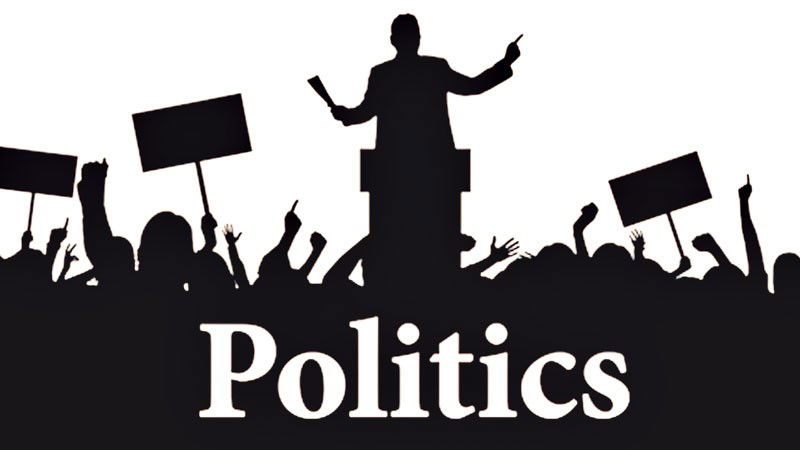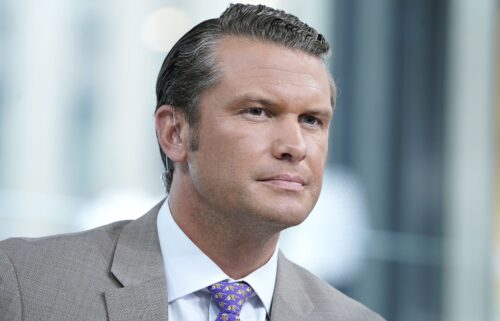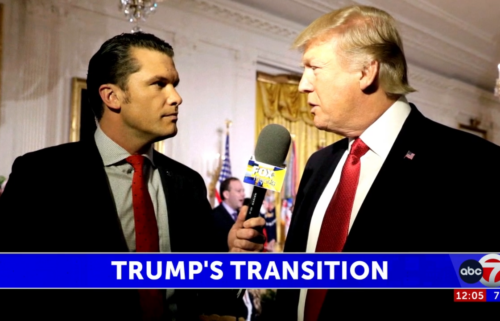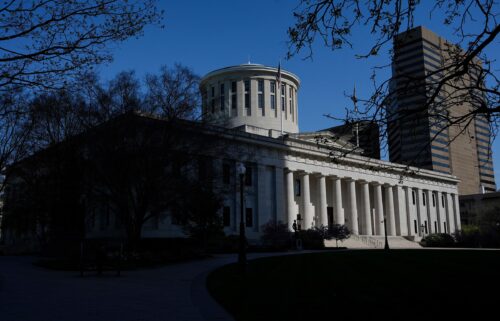Star Wars and me: A 40-year love story

The part of the internet that grew up with the four-decade-long saga known as “Star Wars” was in tears on Monday, as the final trailer was released for the final chapter in the nine-movie chronicle tracing the journey of the Skywalker family — from its corrupted and redeemed patriarch Anakin (whom we first saw as the iconic Sith Lord Darth Vader in the movie we’d eventually learn was the fourth episode of the epic) to its once and future hero Luke, to the Vader-worshipping son of Luke’s secret twin sister Leia, Ben Solo (aka Kylo Ren).
For those of us who lived through this journey, this last invitation to play among the stars was more than just an exercise in nostalgia. It was a chance to look back and consider how much we’ve changed and evolved over that span, and how the saga changed and evolved along with us.
‘Star Wars’ felt familiar
I remembered myself a long, long time ago, in a city far, far away, a ten-year-old waiting on line for tickets to “Episode Four” in May 1977, vibrating with anticipation in the near-festive atmosphere, next to my placidly smoking uncle and my utterly bored sister.
Even then, it was clear that “Star Wars” was something special; something historic, even. For me, however, it was simply my first chance to see a real “Hollywood” film in a big theater, my movie diet until that point having consisted solely of Chinatown double features watched with that same uncle — his preferred way of babysitting.
But as it unfurled onscreen, with that glorious march of angled, scrolling text, I instinctively sensed how surprisingly similar it felt in spirit to the period Hong Kong epics to which I’d become accustomed — the Force seeming like an homage to the qigong magic used by my familiar cinematic martial arts masters, the light saber combat a slightly less high-flying version of the duels between the swordsmen I knew from Chinatown screens.
George Lucas and the droids!
It was only later that I learned how George Lucas, the visionary behind the world and story of “Star Wars,” had been inspired in part by works in an adjacent genre: the samurai films of Japanese cinema legend Akira Kurosawa. This explained why the things that felt familiar to me, likely felt so exotic to others. Then again, the things that they probably took for granted were mind-blowingly new to me: The fully realized alien worlds! Dogfights among the stars! And especially: The droids! C-3PO and R2-D2, the former speaking in a British accent as polished as his golden skin, the latter somehow managing to convey just about anything in a string of emotive beeps and chirps.
In “Star Wars,” Lucas had brewed together so many influences, so many iridescently colliding ideas, that just about everyone could find both something comfortable and something novel within it. It was a galaxy big enough for every imagination to occupy, and as the movie added a sequel, and then became a trilogy, an entire generation of fans took up his invitation to explore it.
Dark side of ‘Star Wars’ fandom
The prequels would demonstrate the resilient intensity of “Star Wars” fandom. An estimated 2.2 million full-time employees across America called in sick on the day of Phantom Menace’s premiere, generating nearly $300 million in lost productivity. The trilogy ended with an incredible $2.5 billion in worldwide ticket sales. And yet, they also drew back the curtain on the dark side of the unstoppable force known as “Star Wars” fandom.
The introduction of comic alien Jar-Jar Binks alone instigated such backlash — including a fan re-edit of the prequel movies that removes Jar-Jar entirely — that Ahmed Best, the actor who portrayed him considered suicide. Jake Lloyd, whose performance as young Anakin in the first movie was also heavily criticized by fans, ultimately left Hollywood and quit acting entirely. The toxicity was so sharp and intense that even Lucas threatened to bring the franchise to a halt: “Why would I make any more (‘Star Wars’ films) when everybody yells at you all the time and says what a terrible person you are?”
Given this, it wasn’t fully surprising that Lucas chose to put his beloved universe into the hands of a company large enough to shrug off the fusillades of fandom, selling it to Disney in 2012. Disney promised that it would not just continue the story, but that it would release new “Star Wars” films every few years, making for perhaps a surplus of fan service.
The first fruits from the Disney acquisition came in the form of 2015’s “The Force Awakens,” under the guidance of new franchise helmsman J.J. Abrams, who’d already proven his ability to breathe new life into hoary SF properties with his 2009 reboot of the other generationally-beloved space fable, “Star Trek.“
Abrams’ approach to the task Disney had set before him seemed cribbed from the teachings of the great Jedi grandmaster Yoda, who counseled Anakin to “train yourself to let go of everything you fear to lose.” After all, the final trilogy would need to pull new characters into the foreground, while bringing those prior generations had loved to a respectful place of rest. And it would have to solve for the realities of a universe whose humanoid cast was predominantly white and, despite the presence of strong female characters like Carrie Fisher’s Leia and Natalie Portman’s Amidala, mostly male.
Abrams was aptly suited to the task of making the franchise more inclusive — his Bad Robot was the first major production company in the industry to adopt a “Rooney Rule” for all cast and crew positions, requiring nonwhite and woman candidates to be interviewed for every job — in part because he saw it as not just a matter of equity, but of relevance to a cinematic audience that’s gotten far more diverse and global in the years since “A New Hope,” and also, frankly, of better storytelling, acknowledging that narratives are richer and more interesting when they’re told through a wide range of voices.
He succeeded. “The Force Awakens” brought new life to the Skywalker saga, generating overwhelmingly positive critical reviews, setting an opening-day earnings record and eventually raking in over $2 billion worldwide, but it also triggered a vocal subsegment of the fandom to decry it as a betrayal of Lucas’ vision, a colorized remake of “A New Hope,” a pandering bow to “social justice warriors.” The sequel, Rian Johnson’s “The Last Jedi,” led to these haters focusing particular hatred on Kelly Marie Tran, whose Rose Tico, a rebel starship maintenance worker thrust by circumstance into an unlikely heroine’s role, is one of a quartet of main characters in the film — none of whom is a white male.
An avalanche of racist and misogynist online hatred led Tran to briefly withdraw from social media; she eventually returned, recognizing her unique status as the first Asian American actor to play a central onscreen role in the galaxy’s biggest movie franchise: “A lot of ‘Star Wars’ fans who are specifically Asian never had a character they could dress up like, or they would and people would always call them ‘Asian Rey’ or ‘Asian fill-in-the-blank,'” she told Variety.
“(So) I get very emotional when I see people who are able to identify with this character … I wish that all different types of people of all races and all upbringings were all equally represented in this industry that influences so many people. But the fact is that’s just not true, so it is important to talk about it. I’m always thinking about that little girl that never saw herself in things.”
And for me, who still remembers that little boy I was back in 1977, the presence of Rose Tico is more than just representation — it’s a tacit acknowledgment of the hidden debt the franchise owes to Asian masterpieces like “The Hidden Fortress” and “Throne of Blood.”
Which is why the final trailer that dropped last night made my throat catch with emotion. The 90-second clip featured plenty of reasons for sentimental tears — the beyond-the-grave appearance of Carrie Fisher, on the anniversary of her untimely death; the triumphant ownership of the screen by Daisy Ridley’s Rey; the return of swashbuckling fan-favorite Lando Calrissian, played by Billy Dee Williams; the enigmatic farewell (?) offered by C-3PO (“Taking one last look, sir … at my friends”). But it was Rose’s brief appearance, alive and defiant, bruised but unbowed, that I teared up at, after terrible rumors that she might have been written out from the final episode after the boiling outrage from the most regressive reaches of the fandom.
I have my quartet of tickets for Thursday, December 19, ready to go, purchased as part of the biggest presale in history, beating out even the record set by that other Disney-owned franchise, Marvel’s Avengers. Whatever end comes to Rose’s story, I’ll be there to watch, knowing that despite the backlash, against the odds, for me and for millions of “Star Wars” fans, now and forever, she will be with us — always.




